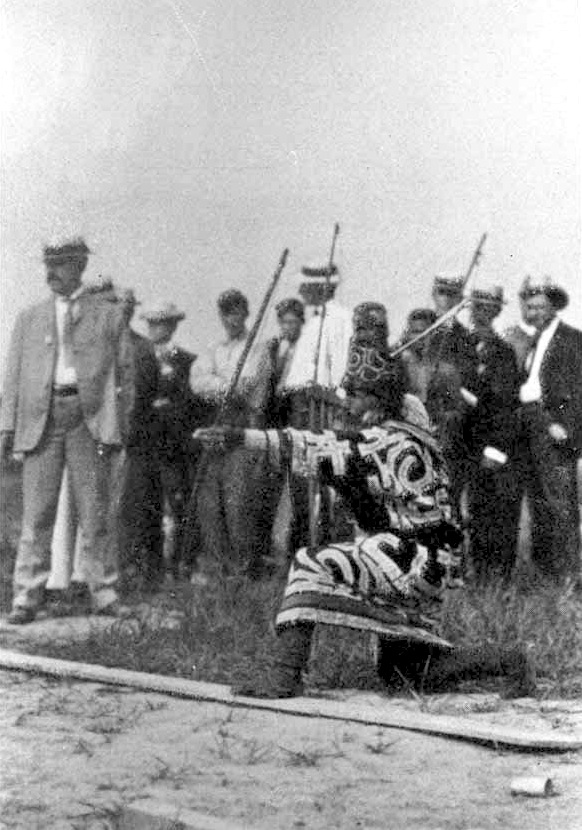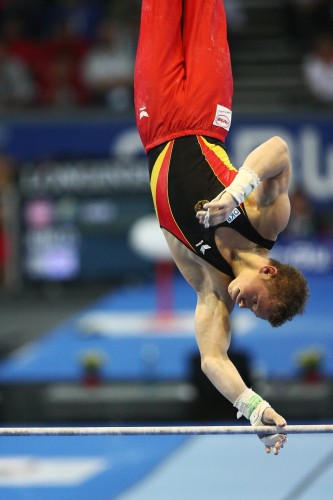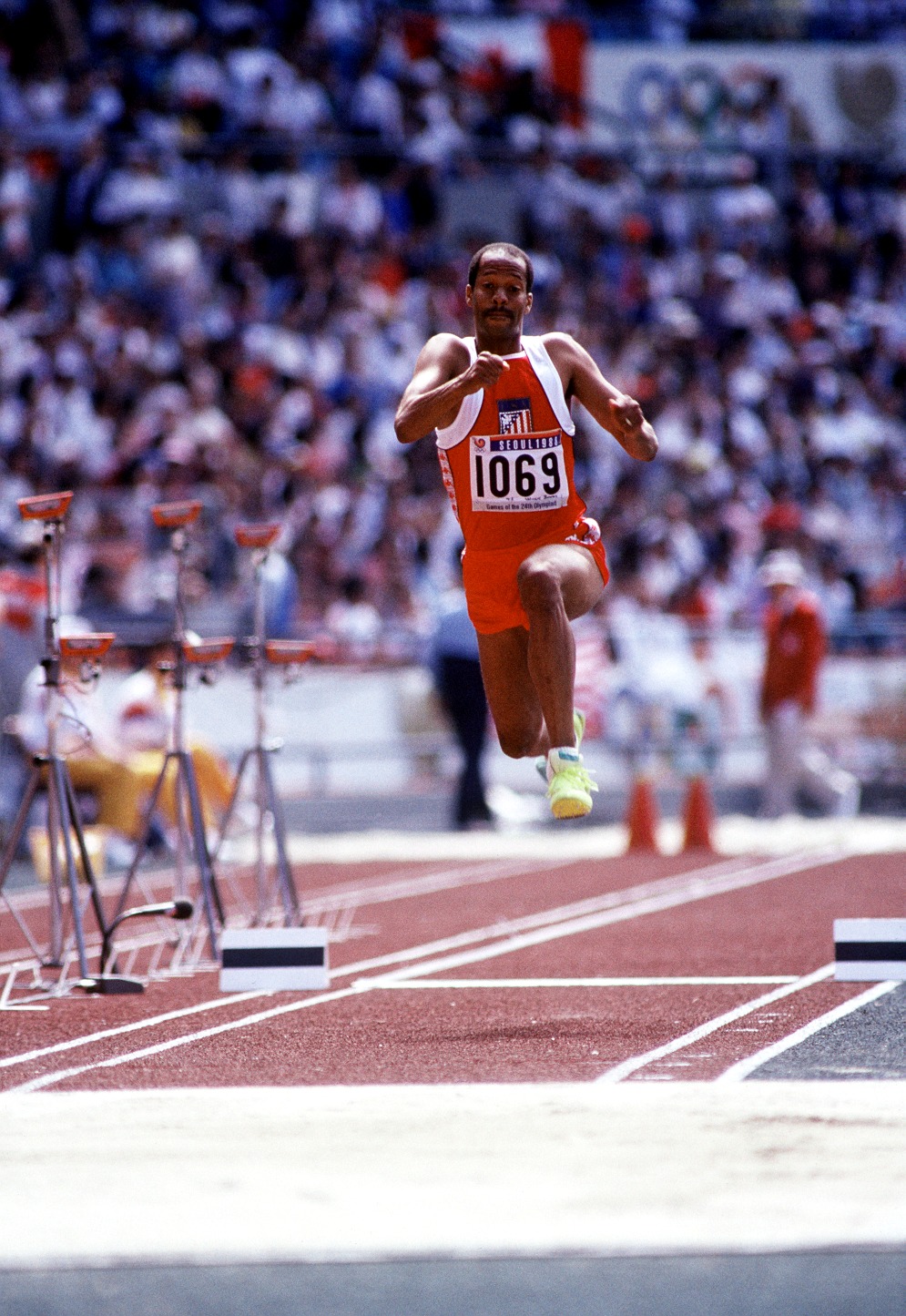|
Fritz Hofmann (athlete)
Fritz Hofmann (born 19 June 1871 in Berlin, German Empire; died 14 July 1927 in Berlin, Weimar Republic) was a German athlete. He competed at the 1896 Summer Olympics in Athens. 1896 Summer Olympics Hofmann competed in the 100 metres. In the heats, he came in second out of five runners, qualifying for the final. There he again came in second, with his time of 12.2 seconds being 0.2 seconds behind the winner, Thomas Burke of the United States. Hofmann also competed in the 400 metres. He placed second in his preliminary heat, advancing to the final. There, he finished in fourth place. He was credited as having finishing third for many years, but modern sources (based on 1896 documents) place him fourth behind Charles Gmelin. In the high jump Hofmann placed last of the five athletes. His best jump was 1.55 metres. He also placed either sixth or seventh (with Khristos Zoumis of Greece taking the other place) in the triple jump, as well as in the bottom three of the seven man field ... [...More Info...] [...Related Items...] OR: [Wikipedia] [Google] [Baidu] |
Germany At The 1896 Summer Olympics
German Empire, Germany competed at the 1896 Summer Olympics in Athens, Greece. The Germans were the third most successful nation in terms of both gold medals (6 plus 1 as part of a mixed team) and total medals (13). Gymnastics was the sport in which Germany excelled. The German team had 19 athletes. The Germans had 75 entries in 26 events (of which 48 entries were in the 8 gymnastics events), taking 13 medals. Medalists Medals awarded to participants of Mixed team at the 1896 Summer Olympics, mixed-NOC teams are represented in ''italics''. These medals are not counted towards the individual NOC medal tally. Multiple medalists The following competitors won multiple medals at the 1896 Olympic Games. Competitors , width=78% align=left valign=top , The following is the list of number of competitors in the Games. , width="22%" align="left" valign="top" , Athletics Hofmann's silver medal in the 100 metres was the only medal earned by the German athletes, though t ... [...More Info...] [...Related Items...] OR: [Wikipedia] [Google] [Baidu] |
Charles Gmelin
Charles Henry Stuart Gmelin (28 May 1872 – 12 October 1950) was a British athlete. He competed at the 1896 Summer Olympics in Athens. Personal life Gmelin was born in Krishnanagar Nadia, in Bengal, India, where his father Frederick Gmelin was a Christian missionary. Gmelin returned to England at an early age for schooling. He was educated at Magdalen College School and Keble College, Oxford. After graduating he took holy orders and later become headmaster of Freshfields School in Oxford, he eventually became curate in Summertown, Oxford and Kidlington in Oxfordshire. Gmelin was an all-round sportsman who represented Oxfordshire at both football and in cricket where he competed in the Minor Counties Championship from 1895 to 1906. In August 1904 Gmelin married Hester Royds in Little Barford, Bedfordshire. He died on 12 October 1950 at Cowley Road Hospital Oxford, aged 78, his wife Hester Mary Alington Royds died in April the following year. Olympic record He had ... [...More Info...] [...Related Items...] OR: [Wikipedia] [Google] [Baidu] |
1906 Intercalated Games
The 1906 Intercalated Games or 1906 Olympic Games was an international multi-sport event that was celebrated in Athens, Greece. They were at the time considered to be Olympic Games and were referred to as the "Second International Olympic Games in Athens" by the International Olympic Committee.Journal of Olympic History, Volume 10, December 2001/January 2002, ''The 2nd International Olympic Games in Athens 1906'', by Karl Lennartz However, the medals that were distributed to the participants during these games are not officially recognised by the and are not displaye ... [...More Info...] [...Related Items...] OR: [Wikipedia] [Google] [Baidu] |
1904 Summer Olympics
The 1904 Summer Olympics (officially the Games of the III Olympiad and also known as St. Louis 1904) were an international multi-sport event held in St. Louis, Missouri, United States, from 29 August to 3 September 1904, as part of an extended sports program lasting from 1 July to 23 November 1904, located at what is now known as Francis Field on the campus of Washington University in St. Louis. This was the first time that the Olympic Games were held outside Europe. Tensions caused by the Russo–Japanese War and difficulties in traveling to St. Louis resulted in very few top-class athletes from outside the United States and Canada taking part in the 1904 Games. Only 62 of the 651 athletes who competed came from outside North America, and only between 12 and 15 nations were represented in all. Some events subsequently combined the U.S. national championship with the Olympic championship. The current three-medal format of gold, silver and bronze for first, second and third place ... [...More Info...] [...Related Items...] OR: [Wikipedia] [Google] [Baidu] |
1900 Summer Olympics
The 1900 Summer Olympics (french: Jeux olympiques d'été de 1900, link=no), today officially known as the Games of the II Olympiad () and also known as Paris 1900, were an international multi-sport event that took place in Paris, France, from 14 May to 28 October 1900. No opening or closing ceremonies were held. At the Sorbonne (building), Sorbonne conference of 1894, Pierre de Coubertin proposed that the Olympic Games should take place in Paris in 1900. However, the delegates to the conference were unwilling to wait six years, and lobbied to hold the first games in 1896. A decision was made to hold the 1896 Summer Olympics, first Olympic Games in 1896 in Athens and have Paris host the second Games. The Games were held as part of the Exposition Universelle (1900), 1900 World's Fair. In total, 1226 competitors took part in 19 different sports. This number relies on certain assumptions about which events were and were not "Olympic". Many athletes, some of whom had won events, we ... [...More Info...] [...Related Items...] OR: [Wikipedia] [Google] [Baidu] |
Bronze Medal
A bronze medal in sports and other similar areas involving competition is a medal made of bronze awarded to the third-place finisher of contests or competitions such as the Olympic Games, Commonwealth Games, etc. The outright winner receives a gold medal and the second place a silver medal. More generally, bronze is traditionally the most common metal used for all types of high-quality medals, including artistic ones. The practice of awarding bronze third place medals began at the 1904 Olympic Games in St. Louis, Missouri, before which only first and second places were awarded. Olympic Games Minting Olympic medals is the responsibility of the host city. From 1928– 1968 the design was always the same: the obverse showed a generic design by Florentine artist Giuseppe Cassioli with text giving the host city; the reverse showed another generic design of an Olympic champion. From 1972– 2000, Cassioli's design (or a slight reworking) remained on the obverse with a cu ... [...More Info...] [...Related Items...] OR: [Wikipedia] [Google] [Baidu] |
Horizontal Bar
The horizontal bar, also known as the high bar, is an apparatus used by male gymnasts in artistic gymnastics. It traditionally consists of a cylindrical metal (typically steel) bar that is rigidly held above and parallel to the floor by a system of cables and stiff vertical supports. Gymnasts typically wear suede leather grips while performing on the bar. Current elite-level competition uses a stainless steel core rail. The gymnastics elements performed on the horizontal bar are regulated by a Code of Points. A bar routine, which is a sequence of several bar skills, usually includes giants with various grips (overgrip, undergrip, dorsal grip, mixed grip), in-bar work, turns, release and regrasp skills, and a dismount. The horizontal bar is often considered one of the most exciting gymnastics events due to the power exhibited by gymnasts during giant swings and spectacular aerial releases and dismounts that often include multiple flips or twists and, in some cases, airborne tr ... [...More Info...] [...Related Items...] OR: [Wikipedia] [Google] [Baidu] |
Parallel Bars
Parallel bars are floor apparatus consisting of two wooden bars slightly over long and positioned at roughly head height. Parallel bars are used in artistic gymnastics and also for physical therapy and home exercise. Gymnasts may optionally wear grips when performing a routine on the parallel bars, although this is uncommon. Apparatus The apparatus consists of two parallel bars that are held parallel to, and elevated above, the floor by a metal supporting framework. The bars are composed of wood or other material, with an outer coating of wood. The vertical members of the supporting framework are adjustable so the height of the bars above the floor and distance between the bars can be set optimally for each gymnast. Dimensions *Bar length: ± *Bar rounded profile: ± vertical by ± horizontal *Bar width: ± *Height of bar from floor: ± *Distance between bars: – (adjustable) History The parallel bars (in German ''Barren'') were invented by Friedrich Ludwi ... [...More Info...] [...Related Items...] OR: [Wikipedia] [Google] [Baidu] |
Gymnastics
Gymnastics is a type of sport that includes physical exercises requiring balance, strength, flexibility, agility, coordination, dedication and endurance. The movements involved in gymnastics contribute to the development of the arms, legs, shoulders, back, chest, and abdominal muscle groups. Gymnastics evolved from exercises used by the ancient Greeks that included skills for mounting and dismounting a horse, and from circus performance skills. The most common form of competitive gymnastics is artistic gymnastics (AG), which consists of, for women (WAG), the events floor, vault, uneven bars, and beam; and for men (MAG), the events floor, vault, rings, pommel horse, parallel bars, and horizontal bar. The governing body for gymnastics throughout the world is the Fédération Internationale de Gymnastique (FIG). Eight sports are governed by the FIG, which include gymnastics for all, men's and women's artistic gymnastics, rhythmic gymnastics, trampolining (including double mini-t ... [...More Info...] [...Related Items...] OR: [Wikipedia] [Google] [Baidu] |
Shot Put
The shot put is a track and field event involving "putting" (throwing) a heavy spherical ball—the ''shot''—as far as possible. The shot put competition for men has been a part of the modern Olympics since their revival in 1896, and women's competition began in 1948. History Homer mentions competitions of rock throwing by soldiers during the Siege of Troy but there is no record of any dead weights being thrown in Greek competitions. The first evidence for stone- or weight-throwing events were in the Scottish Highlands, and date back to approximately the first century. In the 16th century King Henry VIII was noted for his prowess in court competitions of weight and hammer throwing. The first events resembling the modern shot put likely occurred in the Middle Ages when soldiers held competitions in which they hurled cannonballs. Shot put competitions were first recorded in early 19th century Scotland, and were a part of the British Amateur Championships beginning in 1866. ... [...More Info...] [...Related Items...] OR: [Wikipedia] [Google] [Baidu] |
Triple Jump
The triple jump, sometimes referred to as the hop, step and jump or the hop, skip and jump, is a track and field event, similar to the long jump. As a group, the two events are referred to as the "horizontal jumps". The competitor runs down the track and performs a hop, a bound and then a jump into the sand pit. The triple jump was inspired by the ancient Olympic Games and has been a modern Olympics event since the Games' inception in 1896. According to World Athletics rules, "the hop shall be made so that an athlete lands first on the same foot as that from which he has taken off; in the step he shall land on the other foot, from which, subsequently, the jump is performed." The current male world record holder is Jonathan Edwards of the United Kingdom, with a jump of . The current female world record holder is Yulimar Rojas of Venezuela, with a jump of . History Historical sources on the ancient Olympic Games occasionally mention jumps of 15 meters or more. This led sports ... [...More Info...] [...Related Items...] OR: [Wikipedia] [Google] [Baidu] |



1A_Square.jpg)




